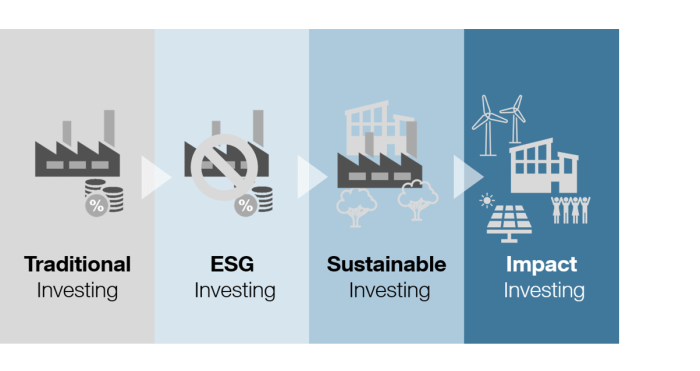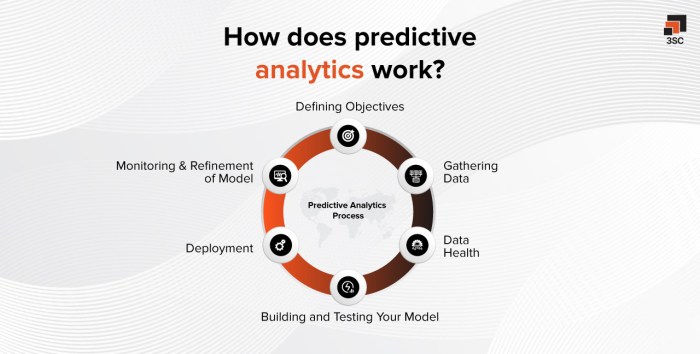How to Use Financial Data to Strengthen Business Strategies is crucial for sustained growth and profitability. This guide explores how understanding key financial metrics, forecasting, and analyzing financial statements empowers businesses to make informed decisions, optimize resource allocation, and gain a competitive edge. We’ll delve into practical applications, including investment analysis, risk management, and integrating financial data with other business intelligence for a holistic strategic approach.
From interpreting balance sheets and income statements to building financial models and performing competitive analyses, we’ll provide actionable strategies and real-world examples to demonstrate the power of data-driven decision-making. By the end, you’ll have a clear understanding of how to leverage financial information to not only improve your current operations but also to strategically plan for future success.
Understanding Key Financial Metrics

Financial data is the lifeblood of any successful business. Understanding key financial metrics is crucial for strategic decision-making, allowing businesses to assess their performance, identify areas for improvement, and ultimately, achieve their goals. By analyzing various financial ratios, companies can gain valuable insights into their profitability, liquidity, and solvency, enabling them to make informed choices about investments, operations, and future growth.
Profitability ratios, liquidity ratios, and solvency ratios are three fundamental categories that provide a comprehensive overview of a company’s financial health. Profitability ratios, such as gross profit margin, net profit margin, and return on equity (ROE), measure a company’s ability to generate earnings from its operations. Liquidity ratios, including the current ratio and quick ratio, assess a company’s ability to meet its short-term obligations. Solvency ratios, such as the debt-to-equity ratio and times interest earned ratio, gauge a company’s ability to meet its long-term debt obligations. The interpretation and relative importance of these ratios can vary significantly across industries, reflecting the unique operational and financial characteristics of each sector.
Investigate the pros of accepting Cash Flow Statement Explained for Beginners in your business strategies.
Industry-Specific Applications of Financial Metrics
Different industries utilize these financial metrics in unique ways due to varying business models and operational characteristics. For example, a capital-intensive industry like manufacturing will place greater emphasis on solvency ratios to assess its ability to manage significant debt loads associated with plant and equipment. Conversely, a service-based industry might focus more on profitability and liquidity ratios, as their assets are less tangible and their operations are often less capital-intensive. Retail businesses, for instance, heavily monitor inventory turnover and days sales outstanding to optimize cash flow and minimize losses from obsolete stock. In contrast, technology companies might focus on metrics like customer acquisition cost and customer lifetime value to evaluate the efficiency and sustainability of their growth strategies.
Case Study: Improving Strategic Position Through Financial Analysis
Consider a hypothetical retail company, “Trendy Threads,” experiencing declining profitability. By analyzing its financial statements, Trendy Threads discovered that its inventory turnover was significantly lower than industry averages, indicating inefficient inventory management. This analysis revealed high levels of obsolete inventory tying up capital and leading to losses. The company implemented a new inventory management system, improving its forecasting accuracy and reducing obsolete stock. This resulted in a substantial increase in inventory turnover, freeing up capital and boosting profitability. The improved efficiency also allowed Trendy Threads to invest in marketing and expansion, strengthening its competitive position in the market.
Comparison of Financial Ratios and Their Implications
| Ratio | Category | Formula | Strategic Implications |
|---|---|---|---|
| Gross Profit Margin | Profitability | (Revenue – Cost of Goods Sold) / Revenue | Indicates pricing strategy effectiveness and efficiency of production. High margin suggests strong pricing power or efficient operations. |
| Current Ratio | Liquidity | Current Assets / Current Liabilities | Measures short-term debt-paying ability. A ratio above 1 suggests sufficient liquidity; below 1 indicates potential short-term financial difficulties. |
| Debt-to-Equity Ratio | Solvency | Total Debt / Total Equity | Indicates the proportion of financing from debt versus equity. A high ratio suggests higher financial risk. |
| Return on Equity (ROE) | Profitability | Net Income / Shareholder Equity | Measures the return generated on shareholder investments. A higher ROE signifies better utilization of equity capital. |
Forecasting and Financial Modeling
Financial forecasting and modeling are crucial for proactive business management. They allow businesses to anticipate future trends, assess risks, and make informed decisions to optimize performance and achieve strategic goals. By systematically analyzing historical data and incorporating various assumptions, businesses can create realistic projections of their financial health, enabling them to prepare for potential challenges and capitalize on opportunities.
The process of creating financial forecasts and models involves several key steps, from gathering relevant data and selecting appropriate forecasting techniques to building the model itself and interpreting the results. Different forecasting methods, each with its own strengths and weaknesses, exist, and the choice depends heavily on the specific business context, data availability, and the desired level of accuracy. Similarly, various financial modeling approaches offer different levels of complexity and detail, catering to the specific needs of businesses of various sizes and industries.
Forecasting Techniques and Their Applications
Several forecasting techniques exist, each suited to different situations. Time series analysis, for instance, uses historical data to identify patterns and trends to predict future values. This is particularly useful for businesses with consistent historical data, such as established retail stores tracking sales figures. Regression analysis, on the other hand, explores the relationship between different variables to predict outcomes. For example, a restaurant might use regression to predict sales based on factors like advertising spend and local events. Qualitative forecasting methods, such as expert opinions and market research, are valuable when historical data is limited or unreliable, like when launching a new product. The choice of method depends on data availability, the predictability of the market, and the business’s risk tolerance.
Financial Modeling Approaches: A Comparison
Several approaches to financial modeling exist, each with its own advantages and disadvantages. Simple models, often using spreadsheets, are easy to build and understand, making them suitable for small businesses with limited resources. However, they may lack the sophistication to capture complex interactions between different variables. More complex models, potentially using specialized software, offer greater detail and accuracy, but require more expertise and resources. These models may incorporate simulations and scenario planning to assess the impact of different uncertainties on business performance. For instance, a large corporation might use sophisticated models to evaluate the potential impact of changes in interest rates or raw material costs. The choice of approach depends on the business’s size, complexity, and resources.
Building a Basic Financial Model for a Small Business: A Step-by-Step Guide
Building a basic financial model for a small business can be achieved through a systematic process.
- Data Gathering: Collect historical financial data, including revenue, expenses, and cash flow for at least the past three years. This data forms the basis of the model.
- Revenue Projection: Project future revenue based on historical trends, market research, and sales forecasts. Consider factors such as seasonality, economic conditions, and planned marketing initiatives. For example, a small bakery might project increased sales during the holiday season based on past performance.
- Expense Budgeting: Create a detailed budget for future expenses, categorizing them into cost of goods sold, operating expenses, and other expenses. Consider potential increases in costs due to inflation or other factors.
- Profit and Loss Statement Projection: Use the projected revenue and expense figures to create a projected profit and loss statement. This statement shows the projected profitability of the business over the forecast period.
- Cash Flow Projection: Develop a projected cash flow statement, showing the anticipated inflow and outflow of cash. This is crucial for managing working capital and ensuring the business has sufficient liquidity.
- Balance Sheet Projection: Project the balance sheet, showing the projected assets, liabilities, and equity of the business. This provides a snapshot of the business’s financial position at the end of the forecast period.
- Sensitivity Analysis: Perform a sensitivity analysis to assess the impact of changes in key assumptions on the financial projections. For example, assess the impact of a 10% increase or decrease in sales on profitability.
A well-structured financial model should be clear, concise, and easily understandable. It should also be flexible enough to accommodate changes in assumptions and new information.
Analyzing Financial Statements
Understanding and interpreting financial statements—the balance sheet, income statement, and cash flow statement—is crucial for strengthening business strategies. These statements provide a comprehensive view of a company’s financial health, allowing for informed decision-making across various aspects of the business. By analyzing these statements, businesses can identify strengths, weaknesses, and areas for improvement.
Key Insights from Financial Statements
The balance sheet presents a snapshot of a company’s assets, liabilities, and equity at a specific point in time. The income statement, on the other hand, shows a company’s revenues, expenses, and profits over a period. Finally, the cash flow statement tracks the movement of cash both into and out of the business during a specific period. Analyzing these three statements together provides a holistic understanding of a company’s financial position and performance. For example, a high level of accounts receivable on the balance sheet might indicate slow collections and potential cash flow problems, a fact that could be corroborated by a low cash flow from operations in the cash flow statement. Similarly, a consistently high gross profit margin on the income statement might suggest pricing power or efficient cost management in the production process.
Trend Analysis of Financial Statements
Trend analysis involves comparing financial data over several periods to identify patterns and potential risks. This analysis can reveal whether key metrics are improving, deteriorating, or remaining stable. For example, a consistent decline in net profit margin over several years might signal underlying issues such as increasing competition or rising costs. Similarly, a rising debt-to-equity ratio could indicate increasing financial risk. By analyzing trends, businesses can proactively address potential problems and make informed strategic decisions. For instance, a consistent increase in operating expenses could prompt a review of operational efficiency and cost-cutting measures.
Using Financial Statement Data for Cost Reduction and Efficiency Improvement
Financial statement data can be invaluable in identifying areas for cost reduction and efficiency improvement. For example, by analyzing the cost of goods sold (COGS) on the income statement, businesses can identify specific areas where costs are high. This might reveal opportunities to negotiate better prices with suppliers, improve production efficiency, or streamline operations. Similarly, analyzing the balance sheet can reveal areas where working capital can be optimized. For instance, reducing inventory levels can free up cash and reduce storage costs. Careful analysis of expenses on the income statement, categorized by department or function, can reveal areas of overspending that need attention and correction.
Impact of Financial Statement Changes on Business Decisions
The following table illustrates how changes in specific line items of financial statements impact key business decisions:
| Financial Statement | Line Item | Change | Impact on Business Decisions |
|---|---|---|---|
| Income Statement | Gross Profit Margin | Decrease | Review pricing strategy, explore cost reduction initiatives in production. |
| Balance Sheet | Current Ratio | Decrease | Assess liquidity risk, explore options for improving short-term funding. |
| Cash Flow Statement | Cash Flow from Operations | Increase | Invest in growth opportunities, reduce debt, increase dividends. |
| Income Statement | Operating Expenses | Increase | Analyze expense categories, identify areas for cost control and efficiency improvement. |
Financial Data and Competitive Analysis

Analyzing competitors’ financial performance is crucial for developing effective business strategies. By understanding their financial strengths and weaknesses, businesses can identify opportunities for growth, innovation, and competitive advantage. This involves comparing key financial metrics, benchmarking against industry averages, and ultimately, informing strategic decision-making.
Understanding a competitor’s financial health provides a valuable insight into their operational efficiency, profitability, and overall market position. This knowledge allows businesses to make informed decisions about pricing, product development, and market penetration strategies. Furthermore, benchmarking against industry averages helps to contextualize a competitor’s performance, highlighting areas where they excel or fall short relative to the broader market.
Competitor Financial Performance Comparison
Comparing competitors’ financial performance involves a systematic review of their key financial statements – balance sheets, income statements, and cash flow statements. This allows for a direct comparison of profitability (profit margins, return on assets), liquidity (current ratio, quick ratio), and solvency (debt-to-equity ratio). For example, a direct comparison of gross profit margins between two companies in the same industry can reveal differences in pricing strategies, cost structures, or product differentiation. A higher gross profit margin might indicate superior pricing power or more efficient production.
Benchmarking Against Industry Averages
Benchmarking against industry averages provides a crucial context for interpreting a competitor’s financial performance. Industry averages, often available through market research firms or industry associations, offer a standard against which to measure a competitor’s relative strength or weakness. For instance, if a competitor’s return on equity (ROE) is significantly below the industry average, it may signal underlying operational inefficiencies or poor management. Conversely, a significantly higher ROE could indicate a competitive advantage. This benchmarking helps identify areas where a competitor is outperforming or underperforming the industry norm.
Key Financial Indicators Revealing Competitive Advantages and Disadvantages
Several key financial indicators can reveal competitive advantages and disadvantages. Profitability ratios (gross profit margin, operating profit margin, net profit margin) illustrate a company’s ability to generate profits. Liquidity ratios (current ratio, quick ratio) reflect a company’s ability to meet short-term obligations. Solvency ratios (debt-to-equity ratio, times interest earned) indicate a company’s ability to meet long-term obligations. Efficiency ratios (inventory turnover, asset turnover) measure how effectively a company uses its assets. Finally, market value ratios (price-to-earnings ratio, market-to-book ratio) reflect investor sentiment and the market’s valuation of the company. A consistently high return on invested capital (ROIC), for example, compared to competitors, suggests a sustainable competitive advantage.
Hypothetical Competitor Analysis: Financial Data Shaping Strategic Responses
Let’s consider two hypothetical competitors in the coffee retail market: “Brewtiful Beans” and “Daily Grind.” Analysis of their financial statements reveals that Brewtiful Beans boasts a higher gross profit margin, indicating potentially superior pricing power or lower cost of goods sold. However, Daily Grind exhibits a stronger current ratio, suggesting greater short-term liquidity. Brewtiful Beans’ higher profit margin might be leveraged to invest in marketing and expansion, while Daily Grind’s superior liquidity could allow for greater flexibility in responding to market changes or unexpected economic downturns. This analysis informs strategic responses: Brewtiful Beans might focus on maintaining its pricing strategy while exploring cost-saving measures, whereas Daily Grind might prioritize managing its inventory levels effectively to maintain its liquidity. This example shows how financial data guides strategic decisions based on a competitor’s strengths and weaknesses.
Risk Management and Financial Data
Financial data forms the bedrock of effective risk management. By analyzing various financial metrics and statements, businesses can proactively identify, assess, and mitigate potential threats to their financial health. This proactive approach not only safeguards against unforeseen losses but also contributes to more robust and sustainable business strategies. A thorough understanding of financial risk is crucial for informed decision-making and long-term success.
Financial data provides the raw material for understanding and managing a wide range of financial risks. Credit risk, the potential for borrowers to default on their obligations, is readily assessed through analysis of credit scores, payment histories, and debt-to-income ratios. Liquidity risk, the risk of not having enough readily available cash to meet short-term obligations, is evaluated by examining cash flow statements, current ratios, and quick ratios. The interplay of these and other risks, when understood through the lens of financial data, allows businesses to create targeted strategies to enhance their resilience.
Identifying and Assessing Financial Risks Using Financial Data
Credit risk, a significant concern for lenders and businesses extending credit, can be effectively assessed using various financial data points. Analyzing a borrower’s credit history, debt levels, and income stability helps determine their creditworthiness. For instance, a high debt-to-income ratio coupled with a history of late payments signals a higher probability of default. Similarly, liquidity risk, the potential inability to meet immediate financial obligations, is evaluated through metrics like the current ratio (current assets/current liabilities) and the quick ratio ((current assets – inventory)/current liabilities). A low current or quick ratio suggests a higher risk of liquidity problems. Financial modeling can further simulate various scenarios to estimate the potential impact of different risk levels on the company’s financial position.
The Role of Financial Ratios in Evaluating Risk
Financial ratios provide a standardized way to compare a company’s performance and risk profile over time and against industry benchmarks. For example, a high debt-to-equity ratio suggests a company relies heavily on debt financing, increasing its financial risk in times of economic downturn. Conversely, a low debt-to-equity ratio indicates a more conservative financial structure. Similarly, the interest coverage ratio (earnings before interest and taxes (EBIT) / interest expense) measures a company’s ability to meet its interest obligations. A low ratio indicates a higher risk of default on debt payments. These ratios, derived from financial statements, provide crucial insights into a company’s risk exposure and financial health.
Integrating Financial Data into a Comprehensive Risk Management Strategy
Integrating financial data into a comprehensive risk management strategy involves several key steps. First, identifying key financial risks through analysis of historical data and industry trends is crucial. Second, quantifying these risks using financial modeling and scenario analysis helps to estimate potential losses. Third, developing mitigation strategies based on the identified risks and their potential impact is necessary. This might include diversifying funding sources, implementing stricter credit policies, or building up cash reserves. Finally, regular monitoring and reporting on key risk indicators allow for proactive adjustments to the risk management strategy as needed. For example, a company might adjust its credit policy based on changes in macroeconomic indicators or its own financial performance.
Financial Risks and Mitigation Strategies
Understanding the various financial risks and their potential impact is critical for developing effective mitigation strategies. The following list Artikels several key risks and potential mitigation approaches:
- Credit Risk: The risk that borrowers will fail to repay their debts. Mitigation: Thorough credit checks, diversified lending portfolio, collateral requirements, credit insurance.
- Liquidity Risk: The risk of not having enough cash on hand to meet short-term obligations. Mitigation: Maintaining sufficient cash reserves, managing working capital effectively, securing lines of credit.
- Market Risk: The risk of losses due to changes in market conditions, such as interest rate fluctuations or commodity price swings. Mitigation: Hedging strategies, diversification of investments, stress testing.
- Operational Risk: The risk of losses due to internal failures or external events, such as fraud, natural disasters, or cyberattacks. Mitigation: Robust internal controls, business continuity planning, insurance.
- Foreign Exchange Risk: The risk of losses due to fluctuations in exchange rates. Mitigation: Hedging using foreign exchange derivatives, diversification of international operations.
Integrating Financial Data with Other Business Information
Financial data, while crucial, provides only a partial picture of a business’s health and potential. To gain a truly comprehensive understanding and make effective strategic decisions, it’s essential to integrate financial data with other vital sources of information, creating a holistic view of the organization. This integrated approach allows for a more nuanced understanding of performance drivers, risks, and opportunities, ultimately leading to better strategic planning and execution.
Combining financial data with operational, market, and customer data reveals powerful correlations and insights that would remain hidden if analyzed in isolation. For example, linking sales figures (financial data) with customer demographics and purchase history (customer data) can reveal valuable patterns in customer behavior, allowing for targeted marketing campaigns and improved product development. Similarly, integrating production costs (financial data) with operational efficiency metrics (operational data) can highlight areas for improvement in supply chain management and manufacturing processes.
Combining Data Sources for a Holistic View
Integrating various data sources requires a structured approach. It begins with identifying the key data points from each source relevant to strategic goals. This involves establishing clear linkages between different data sets. For example, linking marketing spend (financial data) to website traffic and conversion rates (market data) allows for a more accurate assessment of marketing ROI. Data cleaning and standardization are crucial steps to ensure consistency and accuracy before integration. Finally, using appropriate analytical tools and techniques, such as data visualization dashboards and predictive modeling, enables the extraction of meaningful insights from the integrated data.
A Case Study: Improving Retail Performance Through Integrated Data Analysis, How to Use Financial Data to Strengthen Business Strategies
A large retail chain successfully integrated its financial data (sales, costs, profits) with customer relationship management (CRM) data (purchase history, customer preferences, demographics) and market data (competitor pricing, consumer trends). By analyzing this integrated data, they identified a specific customer segment with high purchasing power and a preference for a particular product category. This insight allowed them to tailor marketing campaigns, optimize inventory management, and adjust pricing strategies to increase sales and profitability within this target segment. The result was a significant increase in revenue and market share within the identified niche. This example showcases the power of integrated data analysis in driving targeted and effective business strategies.
Conceptual Diagram of Integrated Data Flow in Strategic Planning
Imagine a central hub representing the strategic planning process. Several streams of data flow into this hub. One stream represents financial data (revenue, expenses, profits, cash flow). Another stream carries operational data (production efficiency, inventory levels, supply chain performance). A third stream contains market data (competitor analysis, market trends, consumer behavior). Finally, a fourth stream comprises customer data (demographics, purchase history, customer feedback). These data streams converge in the central hub, where they are integrated and analyzed using various tools and techniques. The output from this analysis feeds back into the strategic planning process, informing decisions related to product development, marketing, operations, and finance. This iterative process allows for continuous improvement and adaptation based on real-time data insights.
Summary: How To Use Financial Data To Strengthen Business Strategies
Mastering the art of using financial data effectively is paramount for any business aiming for long-term success. By integrating financial analysis into every aspect of your strategic planning, from resource allocation to risk mitigation, you unlock the potential for significant growth and competitive advantage. This guide has equipped you with the foundational knowledge and practical tools to confidently navigate the complexities of financial data and transform it into actionable insights that drive your business forward.
FAQ Guide
What are some common mistakes businesses make when using financial data?
Common mistakes include misinterpreting ratios without context, failing to consider industry benchmarks, neglecting qualitative factors, and relying solely on historical data without forecasting.
How often should a business review its financial data?
Regularity depends on business size and complexity, but monthly or quarterly reviews of key metrics are generally recommended, with annual comprehensive analyses.
What software can help with financial data analysis?
Many options exist, from spreadsheets like Excel to dedicated business intelligence (BI) software and accounting platforms. The best choice depends on specific needs and budget.
How can small businesses access sophisticated financial analysis tools without large budgets?
Cloud-based solutions often offer affordable subscription models, and many free resources (templates, tutorials) are available online.








